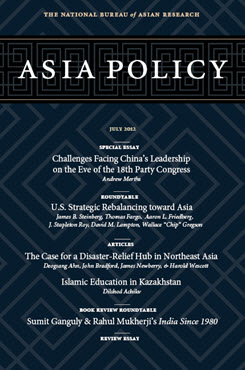The Case for Establishing a Civil-Military Disaster-Relief Hub in Northeast Asia
This article argues that Asia-Pacific security would be enhanced by the establishment of a properly designed, configured, and resourced civil-military disaster-relief hub in Northeast Asia.
EXECUTIVE SUMMARY
MAIN ARGUMENT
Improving the capacity for cooperative civil-military disaster response has emerged as a priority on the Asia-Pacific security agenda. However, international disaster-response cooperation in Northeast Asia has lagged behind that taking place in Southeast Asia, where relevant initiatives have been led by ASEAN. In this context, establishing a hub for civil-military disaster-relief activities in Northeast Asia would provide a noteworthy opportunity to strengthen regional capacity. Regional government officials and members of the humanitarian community have discussed the establishment of such a hub, but analysis regarding the vision for a facility remains limited in the wider policy community. This article suggests disaster-relief functions for a hub and provides an analytical framework for evaluating options regarding its organization and location.
POLICY IMPLICATIONS
- Establishing a humanitarian logistics node in Northeast Asia could enhance disaster-response capability in the subregion and complement the capabilities present in other areas.
- Including command-and-control facilities in a disaster-response hub could provide improved opportunity for interface between disaster-relief providers, forces, and resources.
- A disaster-relief hub could serve as a fusion center for the archiving, sharing, and development of humanitarian expertise.
- A disaster-relief hub could be best developed as a bilateral or trilateral effort by national governments, with the sponsoring governments building cooperative relationships with partners throughout the humanitarian community.
- Given the proactive policy stance that Japan has taken toward developing a disaster-relief hub and Japan’s growing role in disaster-relief activities, the U.S.-Japan alliance may provide the preferred foundation for a hub.
- No location will optimize the opportunity to fulfill all the potential functions of a civil-military disaster-relief hub, but specific evaluation criteria could guide determination of the most efficient and effective location.
Asia Policy 14 is supported in part by a grant from the Ford Foundation.
About Asia Policy
Asia Policy is a peer-reviewed scholarly journal presenting policy-relevant academic research on the Asia-Pacific that draws clear and concise conclusions useful to today’s policymakers. Asia Policy is published quarterly in January, April, July, and October and accepts submissions on a rolling basis. Learn more


